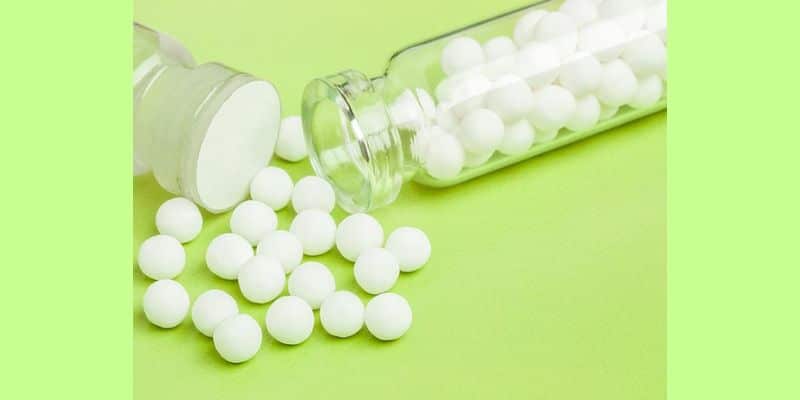Introduction
Webster’s Dictionary defines “placebo” as “a medication prescribed more for the mental relief of a patient than for the actual effect on his disorder, or something tending to soothe.” There are 2 types of Placebo namely, 1) An active placebo is a placebo that produces noticeable side effects that may convince the person being treated that they are receiving a legitimate treatment, rather than an ineffective placebo. 2) Inert Placebo which doesn’t have any known medicinal effect and which is prepared from an inert substance like sugar of milk.
The Homoeopathic System or Practice of Homoeopathy is entirely dependent upon the guidelines given by its founder Samuel Hahnemann in his Organon of Medicine and Chronic Disease, and from his ardent pupils. In order to know the importance of placebo in homoeopathy we need to have a thorough review of the literature and learn what use Hahnemann made of it in his practice.
How the term Placebo came into Medicine:
In contrast to the prevailing opinion that it was the Scottish physician William Cullen (1710e1790) who introduced this expression into medical language in 1772, the credit must be given to another English-speaking physician, Alexander Sutherland (born before 1730-died after 1773) of whom we hardly have any biographical information.1 But it was Cullen, one of the most influential professors at the Edinburgh Medical School, who disseminated this term in British medical circles. In 1772 he used “placebo’for the first time in his popular clinical lectures. He referred to a patient to whom he gave an external application of mustard powder although he was not convinced of its specific effect: “I own that I did not trust much to it, but I gave it because it is necessary to give a medicine, and as what I call a placebo. If I had thought of any internal medicine it would have been a dose of the Dover’s powders.”2
In another case which he also considered to be hopeless he prescribed a kind of palliative medicine that was ineffective in his view. He justified his ethically doubtful decision as follows: “I prescribed therefore in pure placebo, but I make it a rule even in employing placebos to give what would have a tendency to be of use to the patient.”3
Cullen’s ‘placebo’ was, however, not an inert substance. He tended to use low doses of drugs (a kind of pseudo-placebo) which he thought to be ineffective given the severity of the disease. His main concern was not what to prescribe but how to fulfil the patient’s desire for a remedy even though he did not personally believe in its pharmacological effectiveness.
Many people still believe that homoeopathy is a placebo even though nano technology has evidence otherwise. For them it must come as a surprise that Hahnemann, unlike most of his contemporaries, was already familiar with a phenomenon which today we call the placebo effect. First, he differentiated clearly between homeopathic drugs administrated in line with the law of similars and such pharmaceutical substances he considered quite rightly as sham medicine (e.g. milk sugar). Second, as far as we know, he was the first physician who systematically used a single blinded approach in therapy. This means that the patients were kept in the dark about the identity of the drugs.4
Literature Search & Methods:
Homeopathic literature starting from 1810 till 2017 off line and online were viewed in order to get a brief idea of the frequency of use of non-medicated substance ( sugar of milk powder or globules). A close look at Hahnemann’s case journals reveals that in the period from 1801 to1843 Hahnemann usually marked placebos with the paragraph symbol (x) (for example: D 38, 172, line 19). This sign might have been suggested by the abbreviation for sugar in pharmaceutical literature which is ‘ff’. A single placebo powder weighed 0.12e0.18 g. These powders were administered by handing to the patient small wrappers or envelopes which had no labels and were merely numbered. “If the patient should wish to take medicine every day the homoeopathic physician may give him every day a dose of sugar of milk of about three grains, all these powders being marked with successive numbers”.5
The patient therefore did not know which of these contained homeopathic drugs and which just lactose. Hahnemann even thought about a system in which concealment could be achieved by sending a patient to a local pharmacy where the apothecary dispensed homeopathic drugs and placebos without being able to differentiate between the two in order not to influence the patient.6
In a footnote to the first edition of his work “Chronic Diseases” which appeared in 1828 (first English translation in 1845), Hahnemann explained why he had finally chosen milk sugar as his favourite placebo: “There are hypercritical homoeopathic physicians who were afraid that even the sugar of milk might obtain medicinal qualities from being long kept in a bottle, or from long trituration. Long-continued experiments have convinced me that this apprehension is unfounded. Both the raw and the prepared sugar of milk may be taken as nourishment in considerable quantity without the least disagreeable symptoms being experienced from it. Fears have also been entertained that, in triturating the medicinal substance in a porcelain mortar, particles might become detached from this latter, and that the triturating process might change them to powerfully active silicea. To ascertain whether such fears were founded, I caused one hundred grains of sugar of milk to be triturated with a new porcelain pestle in a porcelain mortar, the bottom of which had been recently polished; thirty-three grains were taken at a time. They underwent the process of trituration eighteen times, each trituration lasting six minutes. Every four minutes the mass was stirred up with a spatula. The object of this frequently repeated trituration, which lasted in all three hours, was to impart medicinal qualities, either to the sugar of milk, or, at any rate, to the particles of silicea which might have been separated from the mortar; but from experiments which I have made upon highly susceptible subjects, I have been obliged to infer that the prepared sugar of milk is no more medicinal than the sugar in its raw state; its only quality is that of being nutritious”.7
Reasons for giving placebo
Early on in his homoeopathic practice Hahnemann encountered the problem that his patients were used to taking medicine on a daily basis as it was customary in orthodox medicine at the time. In homoeopathy, however, it was important, in his view, to allow the remedies to fully unfold their action. In an essay that was printed in the Allgemeine Anzeiger der Deutschen in 1814, Hahnemann offered
the following recommendation to his colleagues:
“In the meantime, until the second medicament is given, one can soothe the patient’s mind and desire for medicine with something inconspicuous such as a few teaspoons a day of raspberry juice or sugar of milk.”8
In his work on chronic diseases treated with homoeopathic drugs he advised: “No popular habit, were it ever so injurious, can be abolished all at once. This is the reason why the homoeopathic physician cannot avoid giving to his patients a powder every day; though this appears considerable, nevertheless, there is a good deal of difference between this daily administration of a powder and the allopathic practice.
It is a great blessing for the patient, in taking these powders, marked with successive numbers, especially when he has been predisposed against the more rational method of cure by the artful insinuations of calumniators, not to be able to distinguish the powders containing the medicine from those containing the pore sugar of milk. If he knew that the medicine, of which he expects such brilliant results, is contained in any particular powder, he would often be imposed upon by his fancy; he would imagine to experience the effects which he would set down as real, and he would be in a constant state of excitement. By the system which I propose, all these disagreeable consequences are avoided.
The patient, who knows from experience that he need not expect any painful effects from the medicine he takes, calmly observes the changes which are really going on in his system, and reports to his physician facts, and not illusions. By taking a powder every day, the patient will expect same effects from each. Of course, he ought not to know whether any or all of the powders contain medicine.”7
The main reason for giving placebo in homoeopathy was therefore to please the impatient patient who was used to frequent medications in allopathic medicine, not only every day but sometimes also hourly.
Studies on Hahnemann’s case journals found out that the founder of homoeopathy gave placebo to his patients also for other reasons:
- Hahnemann himself was not sure whether he had found the right homeopathic drug.
- The patient looked in his eyes so sensitive that he wanted to find out first how this patient would react to placebo.
- If a female patient began to menstruate during the treatment, Hahnemann stopped the verum treatment and gave placebo.
- If a patient was used to drinking tangy beer which Hahnemann thought might have medicinal ingredients, this person was temporarily treated with placebos.
Discussion:
Placebo was used frequently. The main reason was to satisfy demands by patients. Hahnemann never thought of placebo as a means to itself. Today we make a clear distinction between pure placebos (substances with no pharmacological effect, e.g. sugar pills) and impure placebos (substances with pharmacological effect but not on the condition being treated).
Conclusion
Hahnemann differentiated clearly between homeopathic drugs and pharmaceutical substances which he considered as sham medicine (e.g. milk sugar). In homoeopathic practice Hahnemann encountered the problem that his patients were used to taking medicine on a daily basis as it was customary in orthodox medicine at the time. The main reason for giving placebo was therefore to please the patient who was used to frequent medications in allopathic medicine, not only every day but sometimes also hourly.
References:
- Jutte R. The History of placebo. World Med J 2010;56(3):109-114.
- Cullen W. Clinical lectures 1772-3 RCPE Manuscript Cullen 4/2 299-300 (facsimile:http://www.jameslindlibrary.org/illustrating/
records/clinical-lectures/key_passages,)
- Cullen W. Clinical Lectures 1772 Feb/Apr RCPE Manuscript
Cullen 4/4 218-9 ( facsimile: http://www.jameslindlibrary.org/
illustrating/records/clinical-lectures/key_passages
- Jutte R. Hahnemann and placebo. 2014 The Faculty of Homeopathy
http://dx.doi.org/10.1016/j.homp.2014.03.003, available online at
- Fischbach-Sabel U. Krankenjournal D 34 (1830). Kommentarband zur Edition. Heidelberg: Karl F. Haug Verlag, 1998, p. 96.
- Mortsch M. Krankenjournal D 22 (1821). Kommentarband zur Edition. Stuttgart: Karl F. Haug Verlag, 2008, pp 151e155.
- Hahnemann S. Transl. by Hempel CJ. The Chronic Diseases, Vol 1. New York: Wm. Radde, 1845. 165 note.
- Hahnemann S. Heilart des jetzt herrschenden Nerven- oder Spitalfiebers (1814). In: Schmidt JM, Kaiser D (eds). Kleine Medizinische Schriften. Stuttgart: Karl F. Haug Verlag, 2001, pp 648e650.
- Hahnemann S, Organon of Medicine, New Delhi: B. Jain Publishers Pvt. Ltd., Sixth Reprint Edition, 1997, 94pp
- Gupta N. Chronic diseases. Indian J Res Homoeopathy [serial online] 2015 [cited 2017 Aug 16];9:285-7. Available from: http://www.ijrh.org/text.asp?2015/9/4/285/172870





Interesting article and nicely written. Hahnemann was such a wise man, and each physician and therapist should know the advantages of giving a placebo at the right time and also what harm nocebos can do!